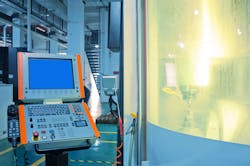There are five important stages in a machine's life cycle that can be enhanced through predictive monitoring and maintenance.
1. Design
The earliest opportunity to prevent a machine failure is during the design stage. If a failure mode can be prevented, it can't cause downtime for the customer. Technology platforms that enable proactivity with regard to maintenance can be used to understand the life cycle of a component and how it will operate in a complete assembly. In addition, such platforms when turned to pneumatics can be used to verify that components aren't starved for air, allowing designers to make adjustments to valve size or reservoir locations to ensure smooth operations.
2. Installation
The life of a machine and its components can also be affected if it has been improperly installed and configured. By monitoring actuator speed, supply pressure, and vacuum levels, platforms created to provide predictive intelligence can help alert users if components are out of spec.
3. Normal Operations
Many machines have difficult-to-access performance data (unless you pay the machine builder to provide it). Sensing technologies offer an easy add-on that allows tracking of machine efficiency by recording cycle counts, average daily cycle, and cylinder pressure. These values can be used to ensure equipment is run as intended and calculate overall equipment effectiveness, production rates, and downtime.
4. Observed Potential Failure
This stage in a machine's life occurs when signs of a potential failure can be observed. Three approaches can be used to identify potential failures: run to failure, spot checks, and continuous monitoring. Run to failure provides no warning of potential failure. Spot checks can miss a potential failure if it develops between checks. Installing a system to continuously monitor critical components will allow you to detect issues sooner, avoiding downtime.
5. Machine Failure
Once a machine fails, identifying the source of the error is critical to reducing downtime. Continuous monitoring will signal which components have begun to perform erratically, and determine if the source of the cylinder failure is a rod seal or a piston seal. Depending on the source, additional changes to a machine can be made to reduce the likelihood of failure in the future.
For more information, contact www.bimba.com.
